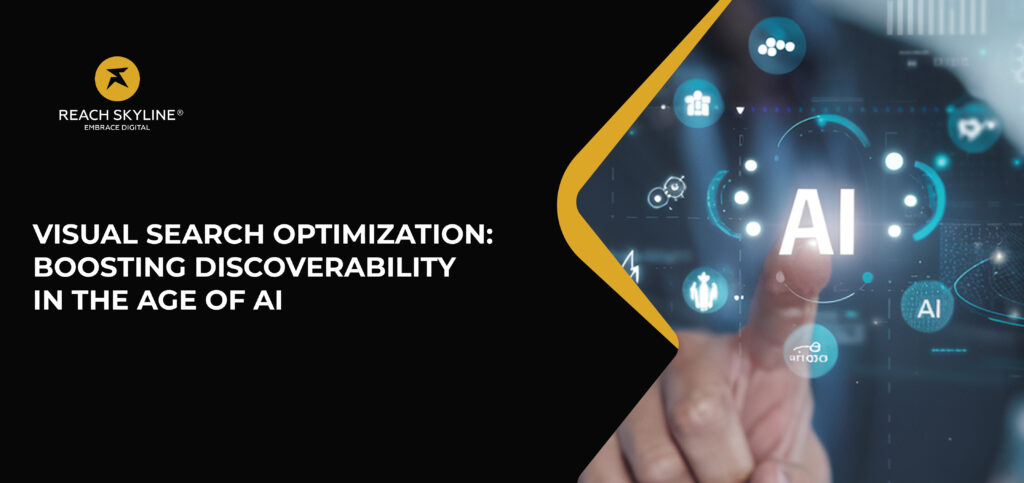Visual Search Optimization: Boosting Discoverability in the Age of AI
Search is evolving faster than ever. For decades, users typed words into search bars to find information. Today, thanks to AI visual search, people can simply snap a picture, upload an image, or scan an object and instantly receive accurate results. This transformation is not only changing the way users interact with technology but also redefining how businesses must approach SEO and digital marketing. In an era dominated by images, visual search optimization has emerged as a critical strategy to boost discoverability. Companies that adapt to this new landscape will find themselves ahead of the curve, while those who ignore it risk being left behind. Understanding Visual Search At its core, visual search uses computer vision in search combined with AI image recognition technology to analyze the contents of an image. Instead of typing “green running shoes,” a user can snap a photo of shoes they like, and AI systems such as Google Lens or Pinterest Lens visual search will instantly deliver results for similar products. This approach removes friction from the discovery process. Rather than relying on a user’s ability to describe an item, AI interprets the image directly. This is a game changer for industries like e-commerce, fashion, home décor, and travel, where users often seek visually driven inspiration. Why Visual Search Optimization Matters The age of AI has brought a shift in consumer behavior. People want instant, relevant results with minimal effort, and visual discovery trends in AI era are filling that gap. Here’s why it matters: Best Practices for Visual Search SEO For businesses to succeed in this evolving landscape, adopting visual search optimization strategies is essential. Here are some best practices: 1. Use High-Quality Images Sharp, clear, and professional visuals improve how AI interprets details. Blurry or low resolution images reduce discoverability. 2. Optimize Image Metadata Adding descriptive alt text, captions, and filenames with relevant keywords like visual search SEO best practices or AI image tagging makes it easier for systems to index and rank images. 3. Leverage AI Image Tagging Automated tools can tag images with attributes (color, shape, product type), making them more relevant in AI visual search results. 4. Ensure Mobile-Friendly Content Since most searches happen on smartphones, mobile optimization is crucial. This includes fast-loading images, responsive design, and compressed files that don’t compromise quality. 5. Build a Visual Content Marketing Strategy From infographics to lifestyle product images, integrating visuals across marketing channels increases opportunities for visual discoverability. 6. Test Across Platforms Regularly test your content using Google Lens or Pinterest Lens visual search to see if your products are showing up. If not, refine your optimization strategy. Case Studies: Brands Leading in Visual Search Several forward-thinking brands are already leveraging visual search engine optimization techniques to stand out: These companies show how visual first strategies not only boost image discoverability but also drive revenue growth. Optimize Before You Fall Behind The world is moving toward AI-powered visual discovery and your brand cannot afford to ignore it. Every day, millions of searches are conducted through tools like Google Lens optimization and Pinterest Lens visual search. If your images aren’t optimized, you’re invisible to this growing audience. Start by auditing your website and product images.Add proper alt text, captions, and AI image tagging.Test how your visuals perform in visual search SEO best practices tools.Invest in a visual content marketing strategy that blends quality images with discoverability techniques. Act today because the future of search is not text, it’s visual.https://reachskyline.com/ Challenges in Visual Search Optimization While the opportunities are massive, businesses must also navigate some challenges: The key is to start early and refine your approach over time. The Future of Visual Search in the Age of AI Looking ahead, visual search optimization will expand beyond e-commerce. We can expect breakthroughs in: As computer vision in search continues to advance, businesses that adapt now will be leaders in the next wave of digital discovery. Final Thoughts Visual search optimization is no longer an option it’s a necessity. In the age of AI, users want quick, accurate, and visual-first answers. By adopting visual search SEO best practices, optimizing image metadata, and investing in AI image tagging, brands can significantly improve their discoverability with AI. Businesses that embrace this shift will build stronger connections with their audiences, enhance conversions, and future-proof their digital strategies.











